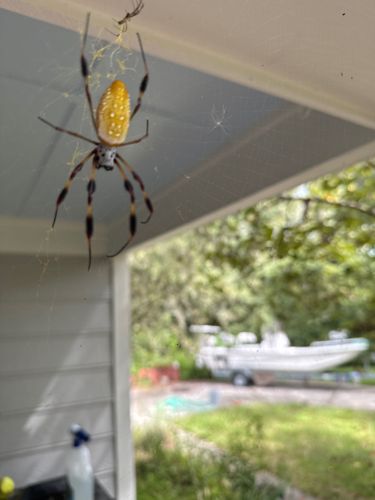Golden Silk Orb-weaver (or Golden Orb-web Spider)
Scientific Name: Nephila clavipes
Order & Family: Araneae, Araneidae (or Nephiliidae, depending on classification)
Size: Females typically have a body length of 1.5-2.5 inches (4-6 cm), with leg spans up to 6 inches (15 cm). Males are much smaller, often less than 0.5 inches (1 cm).

Natural Habitat
Warm climates, often found in forests, gardens, and near human dwellings, building large, strong webs between trees, shrubs, or structures.
Diet & Feeding
Primarily predatory, feeding on a wide variety of flying insects caught in their webs, including flies, mosquitoes, moths, beetles, and sometimes even larger insects like grasshoppers. They inject venom to immobilize prey.
Behavior Patterns
Known for building very large, intricate, and extremely strong golden-colored orb webs that can be several feet in diameter. Females are typically solitary and spend most of their time in their web. Males are often found on the edge of a female's web, waiting for an opportunity to mate. They are generally non-aggressive towards humans.
Risks & Benefits
Risks: While venomous, their bite is generally not considered dangerous to humans, usually resulting in localized pain, redness, and swelling, similar to a bee sting. Serious reactions are rare. Benefits: They are beneficial predators, helping to control populations of various flying insects, including pests. Their silk has been studied for its exceptional strength and elasticity for potential biomaterial applications.
Identified on: 9/26/2025